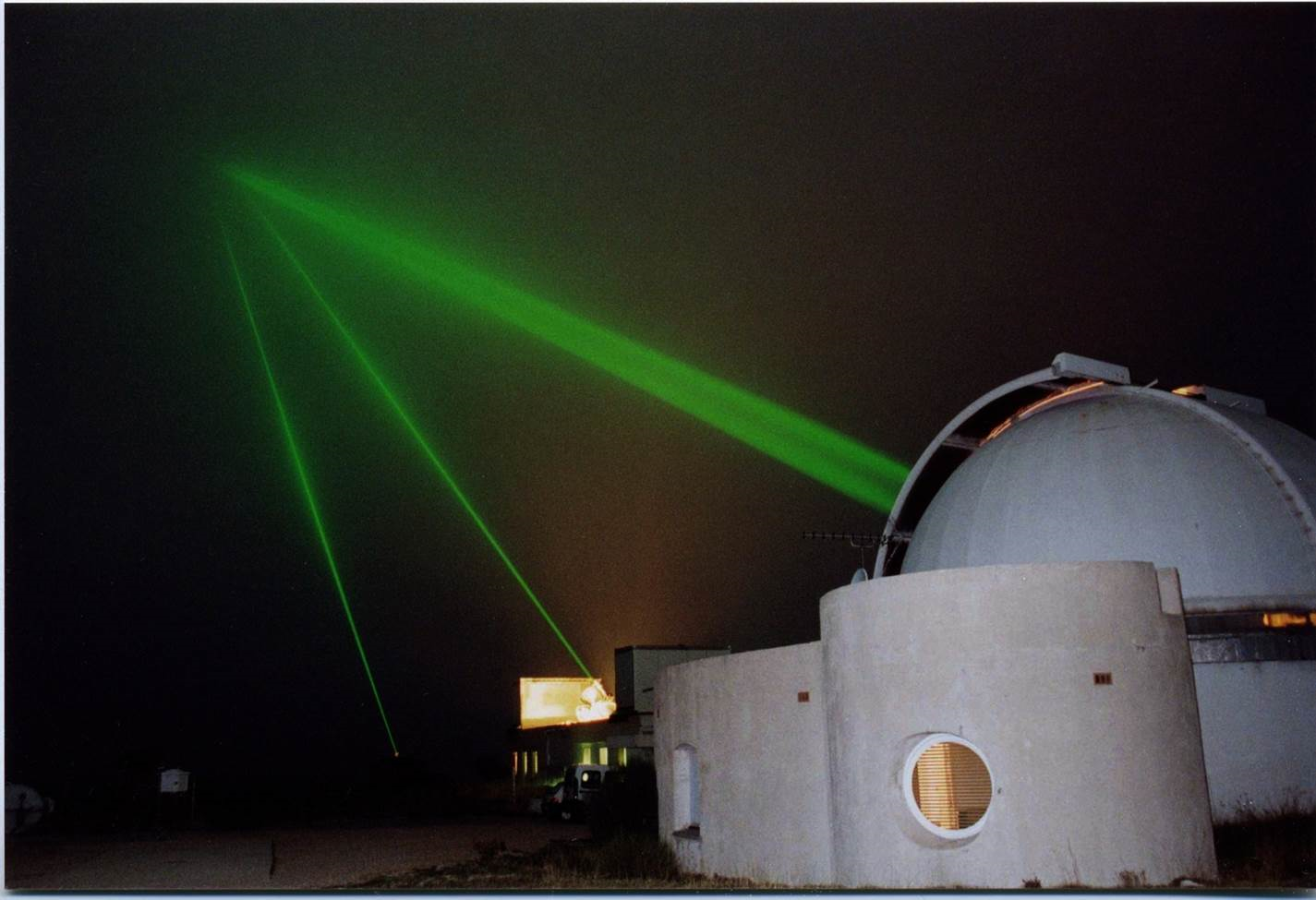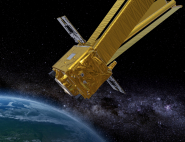Lunar laser ranging
MEASURING THE EARTH-MOON DISTANCE
Using lunar laser ranging, physicists are able to accurately measure how far the Moon is from the Earth. This provides valuable information to detect possible shifts.
To improve the planetary method initially suggested by Newton, we need to know Earth- Moon distance precisely. During the first lunar landing in 1969, the Apollo 11 mission astronauts left a reflector on the Moon. Altogether, five reflectors placed on the Moon by robotic Russian missions and by American astronauts between 1969 and 1973 allow us to precisely measure the Earth-Moon distance by laser ranging.
The design of these reflectors, which physicists name "corner cubes", is the same as that used on bicycle reflectors: they reflect light in the incidental direction. By concentrating powerful laser beams on these reflectors, physicists receive 2.6 seconds later photons that have travelled to the Moon and back, in spite of the huge attenuation of 1021 (1019 photons are sent on each laser firing and only one photon is received every 100 firings).
The return trip time is thus an accurate measurement of the distance between a point on the Moon (one of its reflectors) and a point on Earth (the telescope that emits and receives the laser beam), which can be evaluated to within less than two centimetres—not bad for a satellite lying at an average distance of 360,000 kilometres from Earth.
![]()
Reflector placed on the Moon during the Apollo 15 mission in 1971.
MODIFICATION OF THE LUNAR ORBIT
By knowing the Earth-Moon distance to within a few centimetres, physicists can do a precise test of the equivalence principle.
The Moon's motion is extremely complex. Disturbances of the lunar orbit compared to a circular orbit come from various contributions that generate small oscillations. One of these contributions, the "parallactic inequality", results from the effect of the solar tide on the Moon's motion compared to the Earth. The impact of this disturbance on the Moon is that the lunar orbit shifts slightly towards the Sun. The well-known amplitude of this shift is 110 kilometres.
As the Moon and Earth are of different composition, a violation of the equivalence principle should have an impact on how the Sun attracts these two bodies, hence on the lunar orbit around the Earth. In practice, such a violation would generate an additional shift of the parallactic inequality. By knowing the Earth-Moon distance with an accuracy of two centimetres, physicists compared the measured orbit and the theoretical orbit and were able to validate the equivalence principle with a relative accuracy better than 10-12.
After the first laser ranging measurements from the Pic du Midi in the Pyrenees in the late 1970s, France developed and operated a laser station on the Calern Plateau to measure the Earth-Moon distance. After 30 years almost exclusively dedicated to this task, the station was refurbished to accommodate new activities
Now called MéO (for Métrologie Optique, or optical metrology), the station is today focused on optical links. It is involved in several projects like T2L2 (Time Transfer by Laser Link), the detection of space debris, coherent links (collaboration with the Paris Observatory), adaptive optics (collaboration with ONERA) and obviously laser ranging and more particularly the measurement of the Earth-Moon distance, which remains the instrument's priority.

Laser firing from the Calern Plateau, France

